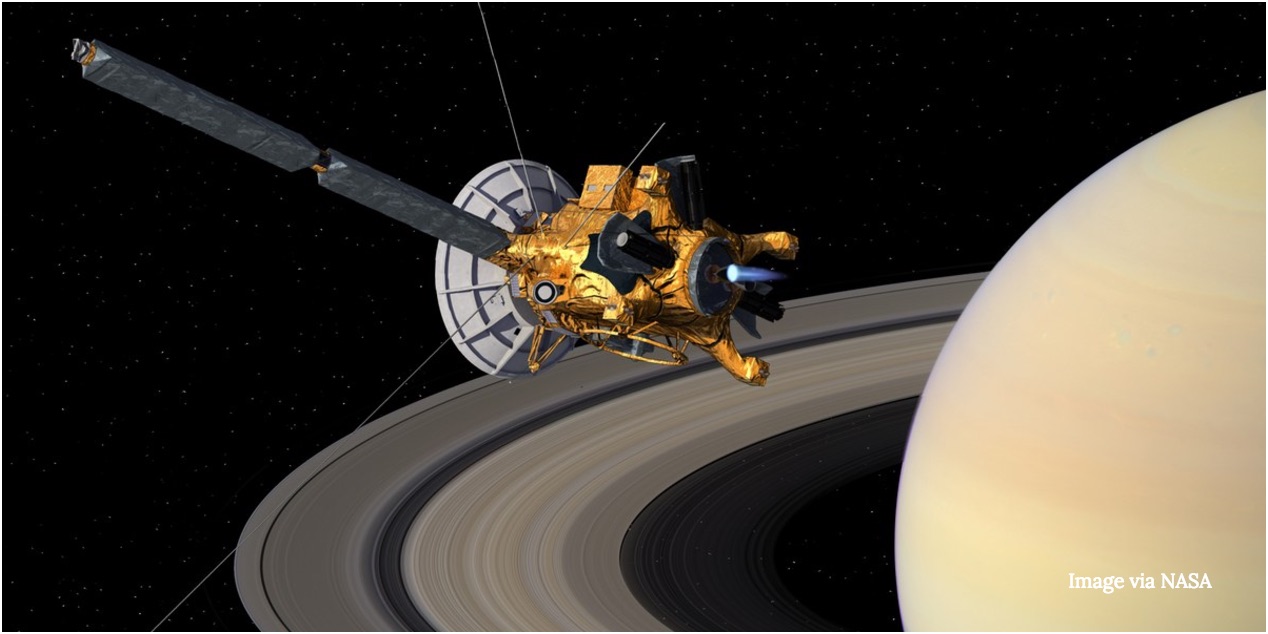Cassini Reveals Changing Conditions at Saturn's Massive Polar Vortices

Time is running out for Cassini's mission. After more than a decade exploring Saturn and its moons, the spacecraft is in its last few months of operations before a planned suicidal plunge in September 2017. The mission is low on fuel, and there's a small risk that it could collide with an icy moon.
One of the special things about being at Saturn for so long is following the slow change of the seasons. It takes Saturn 29 years to orbit the sun. Cassini has now been at Saturn for almost a half-year, or 14.5 Earth years. Different parts of the planet are better illuminated as the gas giant swings around the sun, showing the nature of the poles and their changing seasons.
It is the poles that come under scrutiny in a new paper in the journal Icarus, which compares the north and south polar vortexes on Saturn. Massive storms rage around Saturn's poles, similar to Jupiter's Great Red Spot — but not quite as powerful.
"The north pole showed a lot clearer details, while the south pole generally looked fuzzy," Kunio Sayanagi, an assistant professor at Virginia's Hampton University who led the research, said in an e-mail.
Sayanagi attributed differences to seasonal variation at the poles.
"The north polar data we analyzed in the paper is from late 2012, which is basically early spring, while in 2007 the south pole was in late fall," he said. "Between the equinoxes in 1995 and 2009, the north pole didn't get any sunlight because it was in the long winter polar night. Opposite is true for the south pole — it continuously baked in sunlight during that time."
At the north pole, by contrast, the sky is still clear because smog has yet to form, which allows researchers to observe the pole in greater detail — at least until smog builds up.
Breaking space news, the latest updates on rocket launches, skywatching events and more!
While a buildup of smog won't happen in Cassini's lifetime, Sayanagi explained that there could be some visible changes even in the next few months.
"If that scenario is actually true, we should start seeing a layer of aerosols later in the season," he said, pointing out that some changes were already showing up in late 2016.
"Cassini will keep taking data until the end of the mission later this year," he said. "so hopefully we'll have a really good view of the poles a few more times before the end of the mission."
Originally published on Seeker.

Elizabeth Howell (she/her), Ph.D., was a staff writer in the spaceflight channel between 2022 and 2024 specializing in Canadian space news. She was contributing writer for Space.com for 10 years from 2012 to 2024. Elizabeth's reporting includes multiple exclusives with the White House, leading world coverage about a lost-and-found space tomato on the International Space Station, witnessing five human spaceflight launches on two continents, flying parabolic, working inside a spacesuit, and participating in a simulated Mars mission. Her latest book, "Why Am I Taller?" (ECW Press, 2022) is co-written with astronaut Dave Williams.


